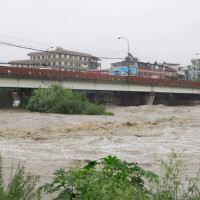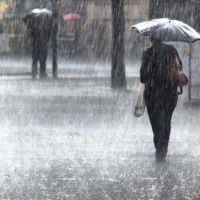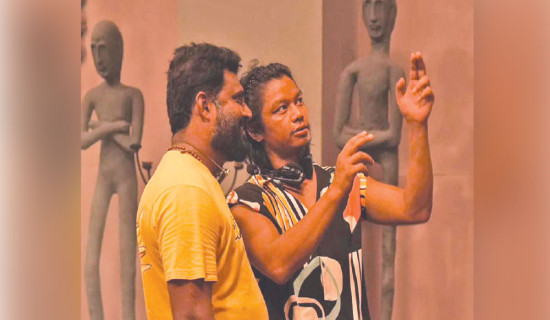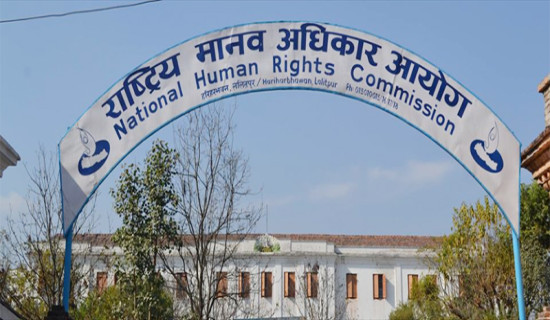- Saturday, 28 September 2024
Ponds built and conserved in Jiri draw visitors
By Our Correspondent,Dolakha, Sept. 28: The appearance of Kyangse Pokhari (pond), situated at the base of Cherdung Hill on the border of Jiri Municipality Ward No. 2 and 5 in Dolakha, has undergone a remarkable transformation. The pond attracts tourists, both domestic and foreign.
The beauty of the lake has been enhanced, after fencing the lake using locally available planks.
According to Nar Bahadur Jirel, Chairman of Ward No. 5, the fencing was done to protect the pond from encroachment.
Locally available wood was used for the fence instead of barbed wire, as it would have been difficult for wild animals like yaks to enter the pond with barbed wire in place.
Unlike barbed wire, wood does not injure the wild animals that come to the pond to quench their thirst.
With road access extended to the pond by Jiri Municipality, tourists begin their trek to Cherdung from this point. Trekkers are drawn to Kyangse Pond, where many visitors stop to take photographs.
Kalo Pokhari situated on the western side of Kyangse Pokhari is currently being conserved. After the pond dried up, rainwater was collected, and during extremely dry seasons, water was piped in from other sources, ensuring a year-round water supply.
Six such ponds have been constructed in Ward No. 5 of the municipality. They have been built in Kalobhiri, Dudhule and Chirupang, on the hills surrounding the Jiri Valley. Jirel said that these ponds ensure a continuous water supply even during the winter season for the water sources that feed Jiri Bazaar.
The construction of these ponds began after the natural water sources that had been used for years started drying up. These ponds were built under the Ecosystem-Based Adaptation (EBA) project, which is being implemented through the Dolakha Division Forest Office.
Conservation ponds have been built in the barren hills and forest areas. The construction of the ponds in forest areas and hills has helped maintain a continuous flow of water to the lower region’s water sources, even during the dry season, prompting local communities to take the initiative.
As climate causes the old water sources to dry up, the hills are experiencing direct consequences. Water shortages during the dry season have intensified, said Shyam Tamang, Secretary of the Shankhadevi Community Forest Users Committee in Bhimeshwor Municipality-9.
“Previously, there were springs in the upper forest areas. But as those springs dried up, wild animals, facing water scarcity, started entering villages in search of water," he said.
The areas around the ponds remain cool and moist, increasing greenery, keeping the environment cooler and preventing water sources in the lower areas from drying up.
Krishna Raj Neupane, head of the Dolakha Division Forest Office, said, “Recharge ponds have also helped control forest fires, provide irrigation to afforested areas and are useful for farmers to irrigate nearby fields. With water sources available in the forests, wild animals no longer enter villages in search of water.”















